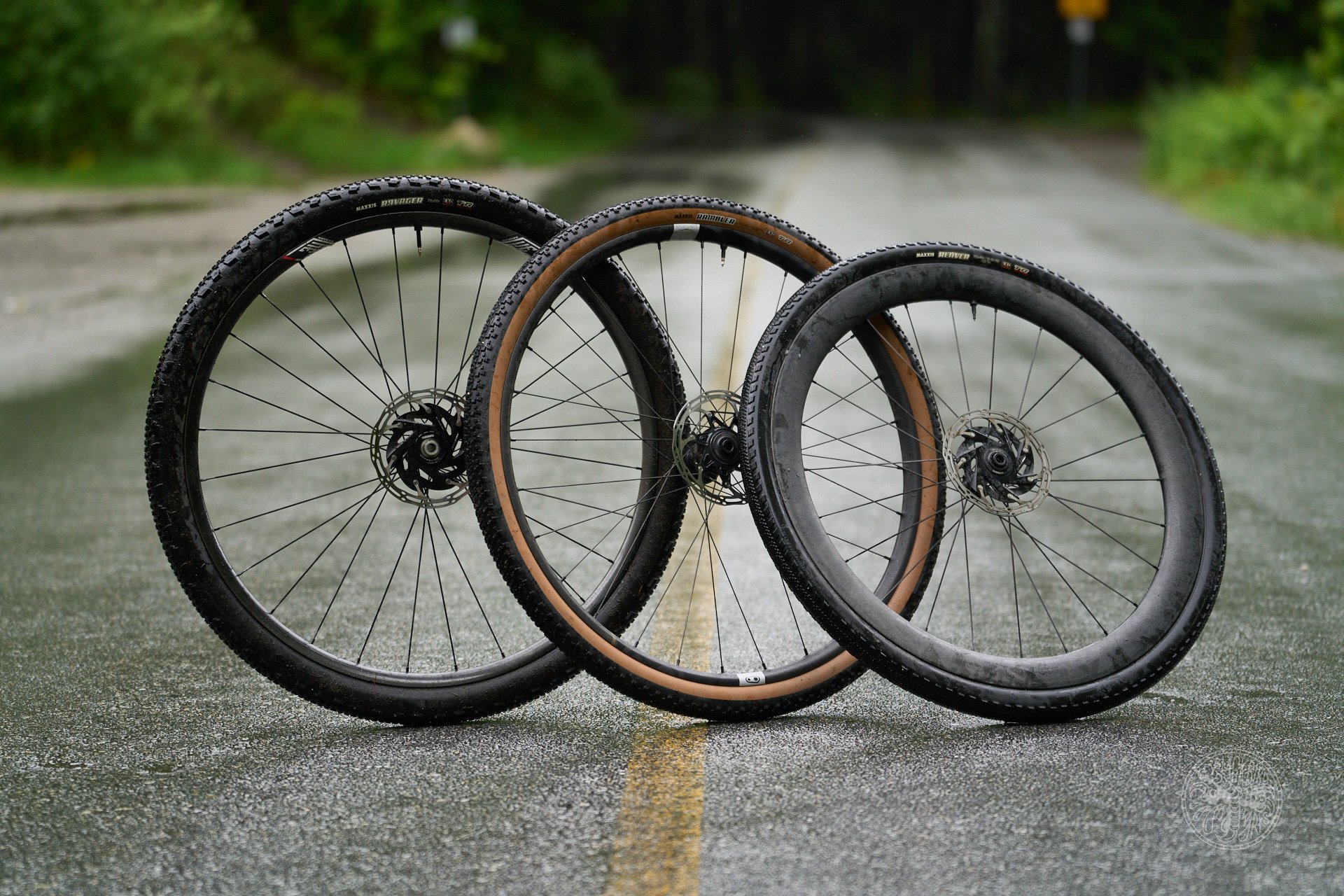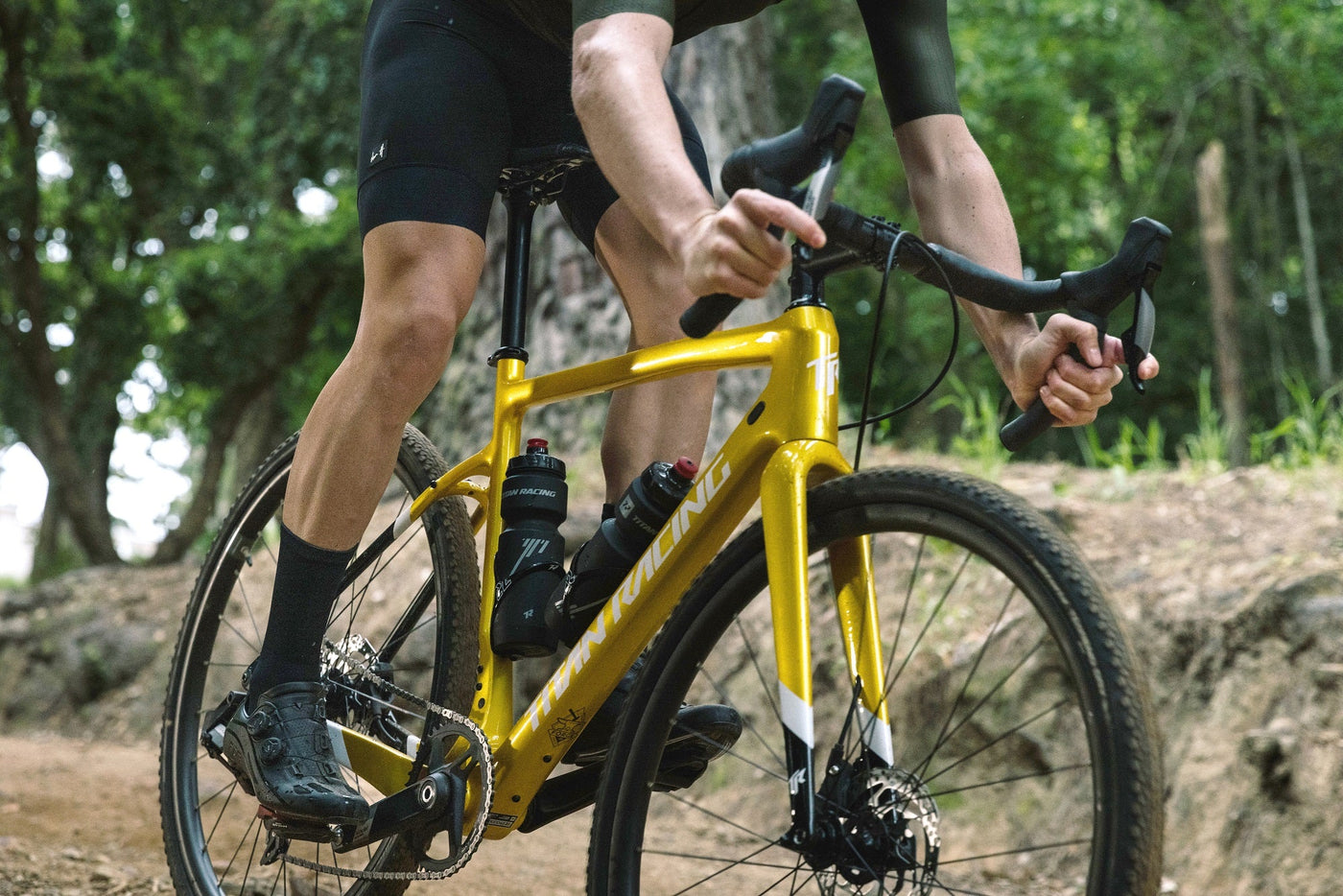Cycling has always been about passion — the freedom to explore, to challenge limits, and to ride where the pavement ends.
Gravel bikes have taken off in the last five years, becoming a welcome alternative for many beginner riders, offering a balance between MTB and road bikes. This is a welcome trend, as more and more people want bikes that can handle a variety of terrains without sacrificing speed. We often get asked questions like: Can road bikes be used in the mountains? Can mountain bikes be adapted for the road or the community? Gravel bikes offer the answer, offering a well-balanced, multi-terrain bike.
At first glance, gravel bikes and mountain bikes might seem similar. Both can handle unpaved roads, both have wider tires than road bikes, and both are built for adventure. Yet, the deeper you go, the more you realize how differently they perform. If you’re trying to decide whether your gravel bike can take on mountain trails — or whether you need a dedicated mountain bike — this guide will help you make an informed decision.
The Core Difference Between Gravel and Mountain Bikes
The simplest way to distinguish gravel bikes from mountain bikes is to look at their DNA — each is born for a different environment.
A gravel bike is essentially a road bike that’s been toughened up. It’s designed to roll efficiently on both pavement and dirt, handling long distances and mixed terrains with speed and stability. The riding position is slightly more relaxed than a road bike, and its geometry is optimized for comfort over hours of riding.
A mountain bike (MTB), on the other hand, is purpose-built for technical trails, rocks, roots, and steep climbs. It has a stronger frame, suspension, and aggressive tires designed to grip loose soil and survive impacts.

So, while a gravel bike can ride off-road, it’s not made for all types of trails.
Frame Geometry and Riding Posture
Geometry determines how your bike feels on different terrains. Gravel bikes typically have a longer wheelbase and a slacker head tube angle (around 70–73°) than road bikes, offering more stability on gravel roads. However, mountain bikes take it even further — head tube angles drop to 65–69°, creating a more upright posture that improves control during descents.
Gravel bikes maintain an aerodynamic position for speed over mixed surfaces, while MTBs prioritize maneuverability and shock absorption.

If your main rides are gravel roads, fire roads, or smooth forest trails, your gravel bike geometry will feel perfect. But on rocky, technical trails, you’ll quickly feel the lack of front suspension and the sharper steering response — making it harder to control at low speeds or on rough descents.
Tires: The Key to Terrain Compatibility
Tires are arguably the most critical component when comparing gravel and mountain bikes.
Gravel bike tires generally range between 32mm and 50mm (1.25–2.0 inches) in width. They’re designed for mixed conditions — not too slick for dirt, but not too knobby for pavement. Common pressure settings are 40–70 PSI, depending on rider weight and surface. A higher TPI (threads per inch) rating, such as 120 TPI, means a more supple and lightweight tire that rolls faster but is less puncture-resistant.
Mountain bike tires, on the other hand, are much wider — typically 2.1–2.6 inches or even more for fat-tire bikes. They run at 20–35 PSI, with lower pressure allowing more traction and comfort over rocks and roots. MTB tires usually have a lower TPI (60 or less) for thicker sidewalls and better durability.

So, can you ride trails with gravel bike tires? Yes — as long as they’re wide enough (around 45–50mm) and have a semi-knobby tread. But you’ll need to keep an eye on tire pressure and avoid extremely rocky or muddy terrains that could damage the rim or cause traction loss.
Suspension and Comfort
Here’s where the biggest difference lies. Most gravel bikes are rigid, meaning they lack suspension. Some high-end gravel models use flex zones in the frame or a suspension seatpost to absorb vibration, but that’s nothing compared to the 100–150mm of travel you’ll find on an MTB fork or shock.
For moderate gravel and dirt paths, the rigid design is an advantage — it’s lighter, more efficient, and more responsive. But if you ride technical trails, you’ll feel every bump.
If you plan to push your gravel bike further, consider upgrading your setup:
-
Use tubeless tires for lower pressure and fewer punctures.
-
Add a suspension seatpost or gravel-specific suspension fork (like RockShox Rudy or Lauf Grit).
-
Choose wider handlebars for better control.
Drivetrain and Gearing
Gearing also highlights how gravel and mountain bikes diverge.
Gravel bikes often use 1x or 2x drivetrains, such as 40T front with 11–42T rear, offering a balance between road speed and off-road climbing.
Mountain bikes, by contrast, commonly use 1x12 systems with huge ranges (for example, 32T front with 10–52T rear) — perfect for steep climbs and unpredictable terrain.
If your gravel routes involve occasional hills or light trails, your gearing is more than enough. But for steep, rocky climbs, MTB gearing provides the lower ratios you need to stay seated and spin efficiently.
Braking Power and Control
Both modern gravel and mountain bikes use hydraulic disc brakes, but MTBs generally have larger rotors (180–200mm) for stronger stopping power on descents. Gravel bikes often use 140–160mm rotors, which are lighter and still effective on most gravel surfaces.
If you often ride long descents or loaded bikepacking routes, upgrading to larger rotors or better brake pads can improve performance without switching bikes.
Can a Gravel Bike Really Replace a Mountain Bike?
So, back to the original question: Can your gravel bike stand in for an MTB?
The answer depends on your terrain and expectations.
✅ You can use a gravel bike for:
-
Fire roads, dirt paths, and light forest trails.
-
Bikepacking on mixed terrain.
-
Fitness and endurance rides with occasional off-road sections.
🚫 But you’ll need a mountain bike for:
-
Rocky, rooty, or steep technical trails.
-
Frequent downhill or enduro-style riding.
-
Riding in mud, snow, or very loose surfaces.
In short: a gravel bike is a great do-it-all choice for riders who want versatility and speed — but it’s not a full mountain bike replacement for serious trail work.
Recommended Gravel Bikes for Mixed Terrain
If you’re looking for a high-performing gravel bike capable of tackling both gravel roads and light trails, here are a few top-rated models worth considering:
1. Canyon Grail CF SL 8
-
Lightweight carbon frame with vibration-reducing cockpit.
-
40mm tires with room for 45mm.
-
Excellent power transfer and comfort for endurance rides.
2. Giant Revolt Advanced 2
-
Adjustable wheelbase and clearance for up to 53mm tires.
-
Smooth-shifting 2x11 drivetrain.
-
A perfect blend of control and comfort.
3. Specialized Diverge Comp Carbon
-
Future Shock 2.0 suspension for added comfort.
-
47mm tire clearance and internal storage.
-
Outstanding performance on rough gravel and dirt.
4. Trek Checkpoint SL 6
-
IsoSpeed decoupler for rear-end compliance.
-
45mm tire clearance with tubeless setup.
-
Adventure-ready geometry and mounts for bags.
Each of these bikes represents the growing evolution of gravel bikes — merging speed, comfort, and light off-road capability.
Hycline GRV Series — Engineered for True Gravel Performance

For riders who want the best tire performance on gravel, Hycline’s GRV Series delivers outstanding durability, grip, and smoothness. These tires are designed specifically for gravel bikes — with an optimized tread pattern, reinforced sidewalls, and high-TPI casings that offer both speed and puncture protection.
Whether you’re exploring country roads or pushing through challenging dirt routes, the Hycline GRV Series ensures confident traction and long-lasting performance for every mile of your adventure.
Final Thoughts: How to Choose for Your Riding Style
If your rides blend long pavement stretches with gravel and dirt, a gravel bike is perfect. It’s efficient, comfortable, and flexible. But if your adventures involve steep trails, jumps, and rock gardens — a mountain bike is the safer and more capable choice.
You don’t have to own both. Some riders start with a gravel bike and later upgrade tires or add suspension components for a more rugged setup. A gravel bike can cover much of what a mountain bike does — as long as you stay within its limits. With the right setup and a quality tire like Hycline GRV, you can enjoy fast, stable, and comfortable rides across a variety of terrains — without sacrificing the thrill of exploration.










